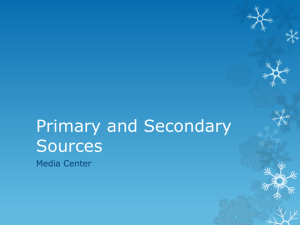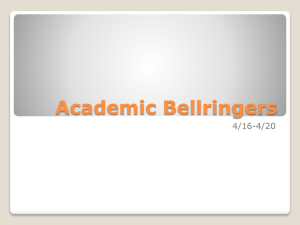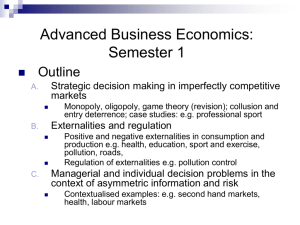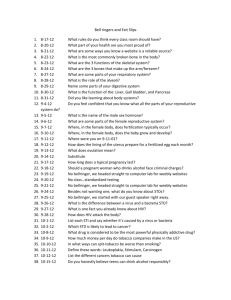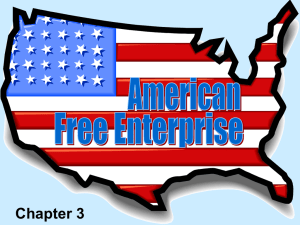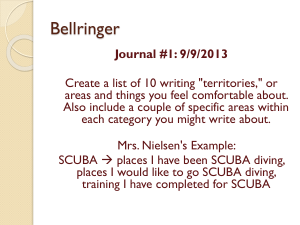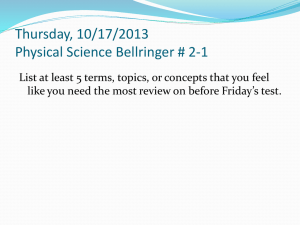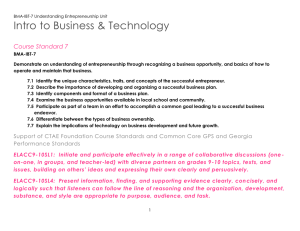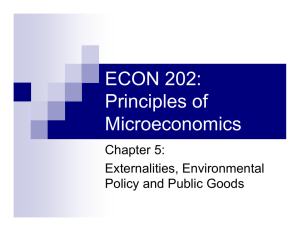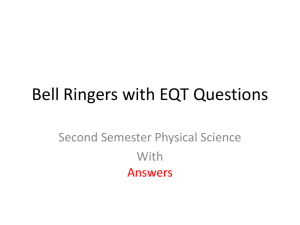American Free Enterprise
advertisement
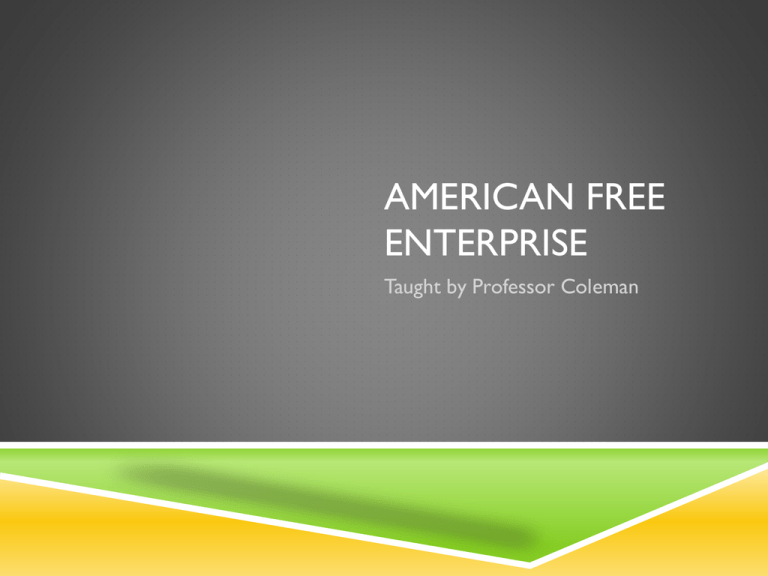
AMERICAN FREE ENTERPRISE Taught by Professor Coleman BELLRINGER Define “land of opportunity” Provide examples of family or community members who started up small businesses. A TRADITION OF FREE ENTERPRISE Why has America been such an economic success? Open land Natural resources Uninterrupted flow of immigrants AND? FREE ENTERPRISE The social and political commitment to giving people the freedom and flexibility to try out their business ideas and compete in the marketplace CONSTITUTIONAL PROTECTION Property Rights Taxation Can’t be taken from an Can only tax in ways individual except when there is a public reason Government must pay fair value of property Applies to businesses, too Constitution allows Congress can levy taxes Direct taxes must be apportioned according to population Guarantees the right to make binding contracts BASIC PRINCIPLES OF FREE ENTERPRISE Profit motive: force that encourages people and organizations to improve their natural well-being Open opportunity: everyone can compete in the market place Economic rights: legal equality, private property, free contract, voluntary exchange, and competition ACTIVITY: BUILDING KEY CONCEPTS Figure 3.1 Features of American Free Enterprise Page 52 Choose one of these features and give an example from your own daily life. ROLE OF THE CONSUMER When consumers buy products, they signal to producers what to produce and how much to make Also make wishes known by joining interest groups ROLE OF THE GOVERNMENT Information and Free Enterprise Protecting Health, Safety, and Well-Being Negative Effects of Regulation ACTIVITY: FOR DOTS!! Applying Economic Concepts, page 55 SECTION ASSESSMENT Section 1 Assessment, pg. 55 2. Economic Profile: Alice Rivlin, pg. 56 1. BELLRINGER Brainstorm a list of tasks performed by librarians Prepare to compare/contrast this job with the job of a government economist. TRACKING BUSINESS CYCLES Macroeconomics Microeconomics Study of the behavior and Study of the economic decision making of entire economies behavior and decision making of small units (individuals, families, households, business) ACTIVITY: KNOW THE DIFFERENCE! (COMPARE/CONTRAST) Macroeconomics How the banking system operates throughout the U.S. Microeconomics How an individual bank tries to make a profit by receiving deposits and making loans TRACKING BUSINESS CYCLES How is economic wellbeing measured? What’s a BUSINESS CYCLE? Gross Domestic Product Period of macroeconomic (GDP) Total value of all final goods and services produced in an economy expansion followed by a period of contraction, or decline. PROMOTING ECONOMIC GROWTH Employment Growth unemployment rate each generation should do between 4% and 6% desirable better measured by GDP PROMOTING ECONOMIC GROWTH Stability Economic Citizenship Gives consumers, Do you expect your producers, and investors confidence in the economy Indicator #1: price levels Indicator #2: Health of financial institutions generation to have a higher standard of living than that of past generations? DO YOUR PART! GET AN UNDERSTANDING OF MACROECONOMIC PROCESSES THAT SHAPE OUR FUTURES! TECHNOLOGY AND PRODUCTIVITY Technological Progress The Government’s Role Process used to produce a Morrill Acts of 1862 and good or service Improvements allow an economy to produce more output form same or smaller quantity of inputs, or resources 1890? Land-grant schools (MIT, Texas A&M)? NASA? U.S. Patents? ACTIVITY . . . BACK TO BELLRINGER Compare and contrast the job of a librarian to the job of a government economist. SECTION 2 ASSESSMENT Key Terms and Main Ideas, page 60, 1-6 Skills for Life: Analyzing Primary Sources, page 61, 1-3 BELLRINGER Recall seeing a young child being asked to share something with another child. Did the child share willingly and fairly without the help of the parent? PROVIDING PUBLIC GOODS A shared good or service for which it would be inefficient or impractical (1) to make consumers pay individually and (2) to exclude nonpayers COSTS & BENEFITS . . . FREE-RIDER PROBLEM Benefit <cost that each would pay if provided privately Societal benefits> total cost (contribution) Public goods financed by public sector Private sector would have little incentive to produce public goods Free riders don’t pay, but still benefit MARKET FAILURES Situation in which the market does not distribute resources efficiently EXTERNALITIES An economic side effect of a good or service that generates benefits or costs to someone other than the person deciding how much to produce or consume. Video: Externalities EXTERNALITIES . . . Positive Externalities Negative Externalities Benefits too many people Generate unintended (not just those who paid for it) Buying/updating an eyesore . . . costs Paper mill wastes pollute river, need to buy watertreatment ACTIVITY – FOR DOTS! Key Terms and Main Ideas, page 66, 1-3 ASSESSMENT Decision Making on Page 66 (#6) Answer in paragraph form BELLRINGER What is your personal definition of poverty? PROVIDING A SAFETY NET Outline pages 67-70 You have 10 minutes. VIDEO: U.S. POVERTY U.S. POVERTY (TAVIS SMILEY & DR. CORNEL WEST) Record 15 salient points from the video SECTION 4 ASSESSMENT Key Terms and Main Ideas, pg. 70, 1-4 CHAPTER 3 EXAM For: Chapter 3 Self-Test Visit: PHSchool.com Web Code: mna-1031 Print & Submit


